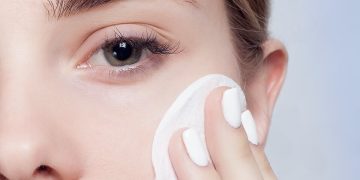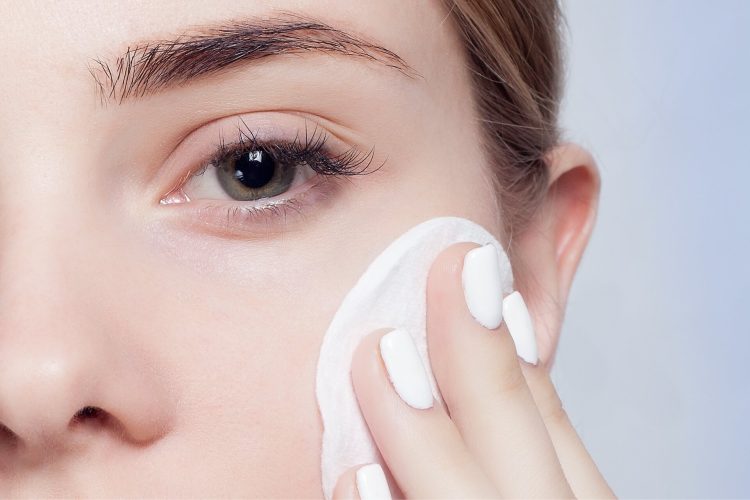Introduction
In the vast world of skincare, it can sometimes feel like you’re drowning in a sea of options. From serums to moisturizers, from cleansers to toners, the market seems to offer an endless array of choices. But the most crucial step in your skincare routine begins long before you grab that fancy bottle off the shelf. The real secret to healthy, glowing skin lies in choosing the right ingredients — and that means understanding your skin type.
Whether you have dry, oily, sensitive, or combination skin, each type has its own set of needs and sensitivities. In this article, we’ll explore the best ingredients for each skin type, bust some common skincare myths, and help you create a personalized skincare routine that works for you.
Understanding Your Skin Type
Before diving into the ingredients, it’s essential to know your skin type. Your skin is as unique as you are, and selecting the right products starts with identifying what your skin truly needs.
1. Oily Skin:
If you have oily skin, you probably notice a shiny complexion, especially in your T-zone (forehead, nose, and chin). Pores may appear enlarged, and acne or blackheads can be a concern. The key is balancing oil production without over-drying the skin.
2. Dry Skin:
Dry skin often feels tight, flaky, or rough to the touch. This type is prone to fine lines and dullness because it lacks moisture and oil. Using nourishing, hydrating ingredients is crucial for dry skin types.
3. Combination Skin:
Combination skin is a bit of a juggling act. You may have an oily T-zone but dry or normal cheeks. The challenge here is finding a product that works for both areas without making one worse than the other.
4. Sensitive Skin:
Sensitive skin is easily irritated by environmental factors, fragrances, and even some skincare products. Redness, burning, and itchiness are common symptoms. Sensitive skin requires gentle, soothing ingredients that won’t cause a reaction.
5. Normal Skin:
Normal skin is often well-balanced, not too oily nor too dry. It’s resilient to environmental changes and generally experiences fewer skin issues. Even if your skin is “normal,” it still benefits from regular care and attention.
Now that we’ve identified the skin types, let’s break down the best ingredients for each one.
Ingredients for Oily Skin
If you have oily skin, the goal is to control excess oil, minimize pores, and keep your skin hydrated without causing breakouts. Below are some of the top ingredients for oily skin:
1. Niacinamide (Vitamin B3):
Niacinamide is a powerhouse when it comes to regulating oil production. This vitamin helps reduce the appearance of enlarged pores, control sebum, and improve the overall texture of the skin. It also has anti-inflammatory properties, making it ideal for calming breakouts.

2. Salicylic Acid (BHA):
Salicylic acid penetrates deep into the pores to help clear out excess oil and debris. As a beta-hydroxy acid (BHA), it exfoliates the skin, preventing clogged pores and the development of acne. It’s perfect for oily skin types prone to acne and blackheads.
3. Clay (Bentonite, Kaolin):
Clay masks are a fantastic way to draw out impurities from the skin. Bentonite and kaolin clays absorb excess oil and help purify the skin without over-drying. These ingredients are best used once or twice a week for oily skin.
4. Tea Tree Oil:
Tea tree oil is well-known for its antibacterial properties, making it a go-to ingredient for acne-prone oily skin. It helps prevent and reduce the number of breakouts by fighting off the bacteria that contribute to acne development.
5. Witch Hazel:
Witch hazel is a natural astringent that helps tone the skin, tighten pores, and reduce inflammation. It’s especially beneficial for those with oily skin who struggle with large pores and uneven texture.
Ingredients for Dry Skin
Dry skin can feel tight, irritated, and rough. The focus here is on hydration, nourishment, and moisture retention. Here are some of the most effective ingredients for dry skin:
1. Hyaluronic Acid:
Hyaluronic acid is a hydrating powerhouse that can hold up to 1,000 times its weight in water. It helps draw moisture into the skin, leaving it plump and well-hydrated. It’s an excellent ingredient for dry skin as it provides intense hydration without being greasy.
2. Ceramides:
Ceramides are lipid molecules that naturally occur in the skin and help form the skin’s protective barrier. As we age, ceramide levels decrease, leading to moisture loss. Using products with ceramides helps restore the skin’s barrier, keeping moisture in and irritants out.
3. Glycerin:
Glycerin is a humectant that draws water from the air into the skin. This ingredient helps to maintain hydration levels, making the skin feel softer and more supple. Glycerin is commonly found in moisturizers and serums for dry skin.
4. Squalane:
Squalane is a lightweight, non-comedogenic oil that hydrates the skin without clogging pores. It’s derived from olives or sugarcane and helps to lock in moisture and restore the skin’s natural softness. Squalane is perfect for dry skin that needs deep hydration without feeling heavy.
5. Aloe Vera:
Aloe vera is a soothing, anti-inflammatory ingredient that helps calm and hydrate the skin. It’s particularly effective for dry skin that’s prone to redness or irritation. Aloe vera also has healing properties, which makes it great for skin that has been exposed to sun damage.
Ingredients for Combination Skin
Combination skin needs a delicate balance between hydration and oil control. Here are the key ingredients that work best for combination skin:
1. Vitamin C:
Vitamin C is a brightening antioxidant that helps even out skin tone and improve the overall texture of the skin. It works well for combination skin because it helps reduce dark spots (often caused by oilier zones) while offering a gentle glow.
2. Lactic Acid (AHA):
Lactic acid is an alpha-hydroxy acid (AHA) that gently exfoliates the skin and helps remove dead skin cells. This can help smooth out dry patches while gently balancing oil production. Lactic acid is less harsh than other AHAs, making it ideal for combination skin.
3. Green Tea Extract:
Green tea is rich in antioxidants and has anti-inflammatory properties. It can help soothe oily areas, calm redness, and protect the skin from environmental stressors. It’s gentle enough for the dry parts of your face but effective in treating inflammation in oilier zones.

4. Jojoba Oil:
Jojoba oil is unique because it closely resembles the skin’s natural sebum. It hydrates without clogging pores, making it perfect for combination skin. Jojoba oil can help balance oil production, soothing dry areas while controlling shine in the T-zone.
5. Rose Water:
Rose water is a gentle toner that can hydrate and soothe the skin. It helps balance both oily and dry zones, providing just the right amount of hydration to maintain the skin’s natural equilibrium.
Ingredients for Sensitive Skin
Sensitive skin is reactive and prone to irritation, so the focus is on soothing, calming, and protecting. Here are the best ingredients for sensitive skin:
1. Chamomile Extract:
Chamomile extract is known for its anti-inflammatory and calming properties. It can help soothe redness, irritation, and discomfort, making it ideal for sensitive skin. Chamomile also has mild antioxidant properties to protect the skin from environmental stressors.
2. Centella Asiatica (Cica):
Centella Asiatica, often referred to as Cica, is a healing herb known for its ability to repair the skin’s barrier. It’s excellent for calming inflammation, reducing redness, and promoting the regeneration of skin cells. Cica is often used in products designed for sensitive and acne-prone skin.
3. Oat Extract:
Oat extract is a skin-soothing ingredient that works wonders for sensitive skin. It helps calm irritation, reduce inflammation, and promote healing. Oat is also rich in beta-glucans, which help strengthen the skin’s barrier and improve hydration.
4. Calendula:
Calendula extract is derived from marigold flowers and has been used for centuries for its anti-inflammatory and wound-healing properties. It’s great for sensitive skin as it helps reduce irritation, promote healing, and soothe redness.
5. Allantoin:
Allantoin is a naturally occurring compound found in plants that helps soothe and protect the skin. It aids in wound healing, calms irritation, and keeps the skin hydrated without causing further sensitivity.
Ingredients for Normal Skin
Even if your skin is relatively low-maintenance, regular care is still essential. Here are some of the ingredients that can keep normal skin healthy and glowing:
1. Retinol (Vitamin A):
Retinol helps promote cell turnover, reduce fine lines, and prevent clogged pores. It’s ideal for maintaining youthful skin by improving texture and tone. If you have normal skin, retinol can be used to prevent early signs of aging and keep your skin smooth.
2. Peptides:
Peptides are short chains of amino acids that help stimulate collagen production, making them perfect for keeping the skin firm and youthful. Peptides work well for normal skin to support its structure and elasticity.
3. Vitamin E:
Vitamin E is a powerful antioxidant that helps protect the skin from environmental damage. It also has moisturizing properties that help keep the skin soft and supple. Vitamin E works well for normal skin to maintain its natural glow.
4. Zinc:
Zinc helps regulate oil production and has anti-inflammatory properties that can prevent breakouts. It’s also an excellent ingredient for protecting the skin from sun damage and calming irritation.
Conclusion
Choosing the right skincare ingredients for your skin type can be the difference between a glowing complexion and a skincare nightmare. By understanding your skin’s needs, you can select products that nourish, protect, and address your skin’s unique concerns. Whether you have oily, dry, combination, sensitive, or normal skin, the right ingredients can help you achieve the healthy, radiant skin you deserve.



















































